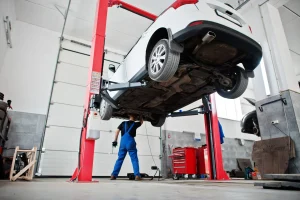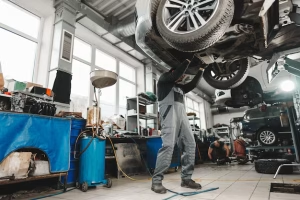Owning a car comes with a range of responsibilities, and one of the most important is regular maintenance. While many car repairs require professional help, there are several tasks that you can easily handle yourself. DIY car repair can save you money, enhance your vehicle’s performance, and give you a sense of accomplishment. This article covers some of the most common DIY car repair projects that can keep your car running smoothly and efficiently.
1. Changing the Oil and Oil Filter
Changing the oil is one of the most crucial tasks for maintaining the health of your car’s engine. Fresh oil keeps the engine lubricated, reducing friction and preventing overheating. Over time, oil breaks down and becomes less effective, which is why it’s important to change it regularly. The process involves draining the old oil, replacing the oil filter, and adding fresh oil. Most vehicles require an oil change every 3,000 to 5,000 miles, depending on the type of oil and the manufacturer’s recommendations.
To change the oil, you’ll need a wrench, an oil filter wrench, a jack, an oil pan, and a funnel. Make sure to check the oil type specified in your owner’s manual. This is an easy task that can be done at home, saving you a trip to the mechanic and potentially hundreds of dollars over time.
2. Replacing Air Filters
The air filter is responsible for keeping dirt, debris, and contaminants out of the engine’s air intake system. A clogged air filter can reduce engine performance, decrease fuel efficiency, and cause long-term engine damage. Replacing the air filter is a simple task that can be done in just a few minutes. Depending on your car model, the air filter may be located under the hood, in a compartment near the engine.
Replacing the air filter typically involves removing the old filter from its housing and placing the new one inside. You can find the correct replacement air filter at an auto parts store, and it’s an inexpensive part. This repair improves engine performance and helps maintain fuel efficiency.
3. Changing Spark Plugs
Spark plugs are essential for igniting the air-fuel mixture in your car’s engine. Over time, spark plugs can wear out and cause engine misfires, poor acceleration, and decreased fuel efficiency. Changing spark plugs is a relatively simple task that can significantly improve engine performance. The process involves locating the spark plugs, disconnecting the ignition wires, and replacing the old plugs with new ones. A spark plug socket wrench is necessary for this job.
Before replacing the spark plugs, make sure to check their condition. If they appear worn or dirty, it’s time for a replacement. This repair can improve engine power, increase fuel efficiency, and reduce emissions.
4. Replacing Brake Pads
Brakes are one of the most important safety features of any vehicle, so keeping them in good condition is essential. Over time, brake pads wear down and need to be replaced to maintain optimal braking performance. Replacing brake pads is a more advanced DIY project but can be done by most car owners with some patience and the right tools.
The process involves lifting the car, removing the wheels, and then using a wrench to remove the calipers. Once the calipers are removed, you can replace the old brake pads with new ones. It’s essential to check the condition of the brake rotors and replace them if they show signs of damage. This repair can save you money on labor and prevent potential safety hazards caused by worn-out brakes.
5. Replacing Wiper Blades
Wiper blades are crucial for maintaining visibility during rainy or snowy weather. Over time, the rubber on wiper blades can wear out, leaving streaks or creating noise when in use. Replacing the wiper blades is one of the easiest and quickest car repairs. The process involves lifting the wiper arm and removing the old blades from their attachment points. Then, simply snap in the new blades and ensure they are securely in place.
You can find replacement wiper blades at an auto parts store, and they’re relatively inexpensive. This simple repair improves visibility and safety during inclement weather.
6. Changing the Battery
A dead battery can leave you stranded, so it’s important to regularly check the condition of your car’s battery. If the battery is old or showing signs of failure, replacing it yourself is a straightforward process. To replace the battery, you’ll need a wrench to remove the terminals, and you should always start by disconnecting the negative terminal first.
Once the old battery is removed, place the new one in the same position and reconnect the terminals, ensuring they’re tight and secure. Make sure to check the battery’s charge level using a multimeter. This simple DIY repair can save you the cost of professional installation and ensure your car starts reliably every time.
7. Fixing Minor Dents and Scratches
While you may not be able to fix major body damage on your own, repairing minor dents and scratches is something you can do with a few simple tools. For small dents, there are dent repair kits available that can help you pop the dents out without damaging the paint. For scratches, you can use touch-up paint that matches your car’s color.
These repairs can be done quickly and affordably, and they help maintain your car’s appearance. While DIY fixes won’t restore the car to factory condition, they can significantly improve its look and value, especially if you’re looking to sell or trade it in.
8. Replacing Tire Valve Stems
A slow leak in your tire is often caused by a faulty valve stem. While this may seem like a major issue, it’s actually a relatively easy fix. Replacing the valve stem involves deflating the tire, removing it from the wheel, and replacing the old valve stem with a new one. After replacing the valve stem, inflate the tire to the proper pressure and check for any leaks.
This repair ensures that your tires stay properly inflated, which improves fuel efficiency and overall vehicle safety.
9. Flushing the Radiator
The radiator is responsible for regulating your car’s engine temperature by cooling the coolant. Over time, the coolant can become dirty or lose its effectiveness, leading to overheating and potential engine damage. Flushing the radiator involves draining the old coolant, cleaning the radiator, and refilling it with fresh coolant.
This repair can extend the life of your engine and prevent costly overheating problems. It’s a bit more involved than some other DIY repairs, but with proper preparation, it’s a manageable task for most car owners.
10. Replacing the Alternator
The alternator is responsible for charging your car’s battery while the engine is running. If your alternator is malfunctioning, your car’s electrical system will fail, leaving you with a dead battery. Replacing the alternator is a more advanced repair but can save you hundreds of dollars in labor costs.
To replace the alternator, you’ll need to disconnect the battery, remove the serpentine belt, and unbolt the alternator. After removing the old alternator, install the new one and reattach all components. Make sure to check that the alternator is charging the battery properly once the job is complete.
Conclusion
DIY car repairs can save you a significant amount of money, improve the longevity of your vehicle, and help you stay on top of maintenance tasks. By performing regular repairs and taking care of minor issues before they become major problems, you can ensure that your car continues to run smoothly for years to come. Whether you’re changing the oil, replacing the brake pads, or fixing minor dents, these top DIY car repair projects are a great way to take control of your car’s maintenance and save money along the way. With the right tools, patience, and a bit of research, you’ll be able to handle most repairs on your own and enjoy the satisfaction of keeping your car in top shape.



